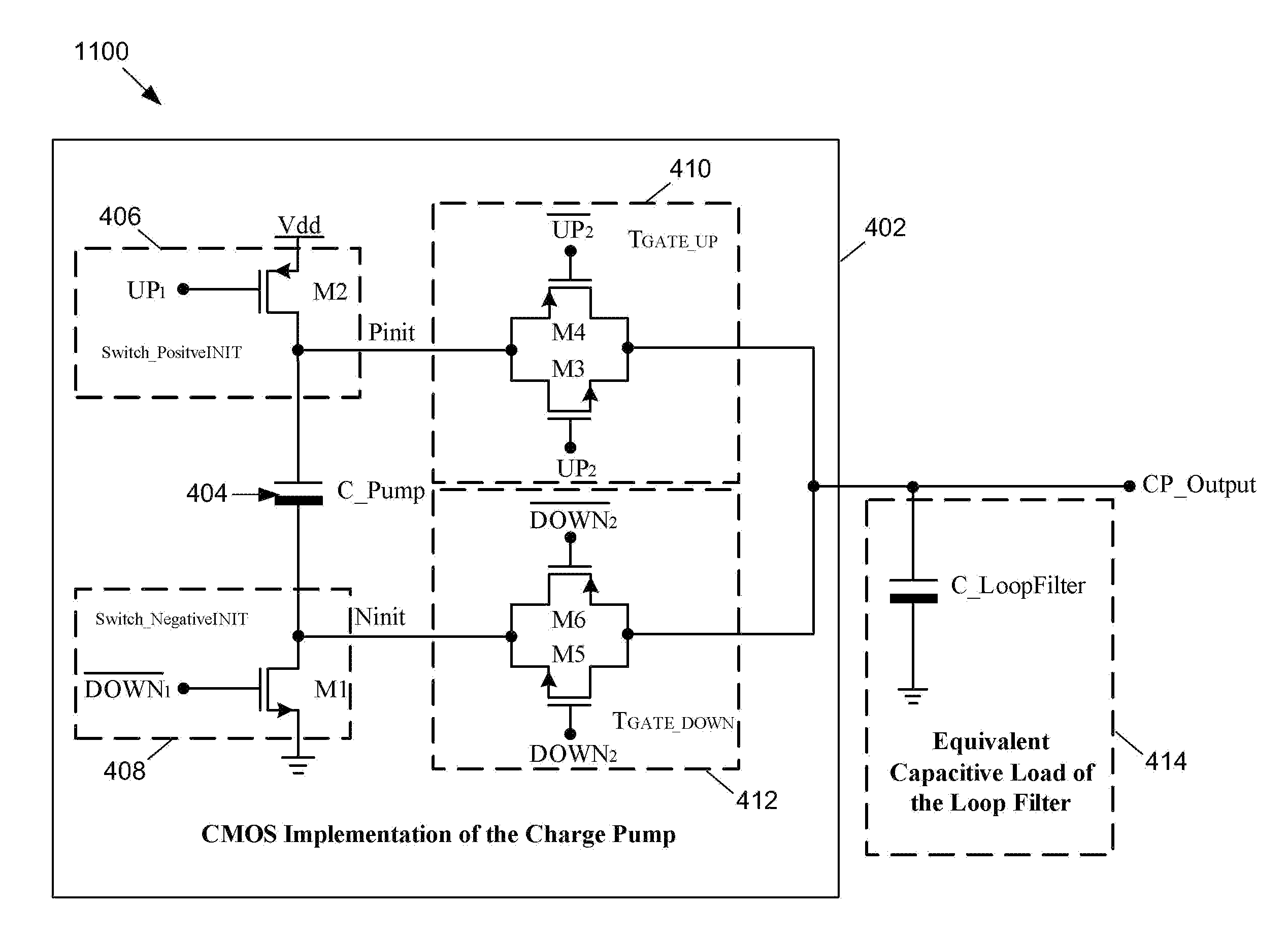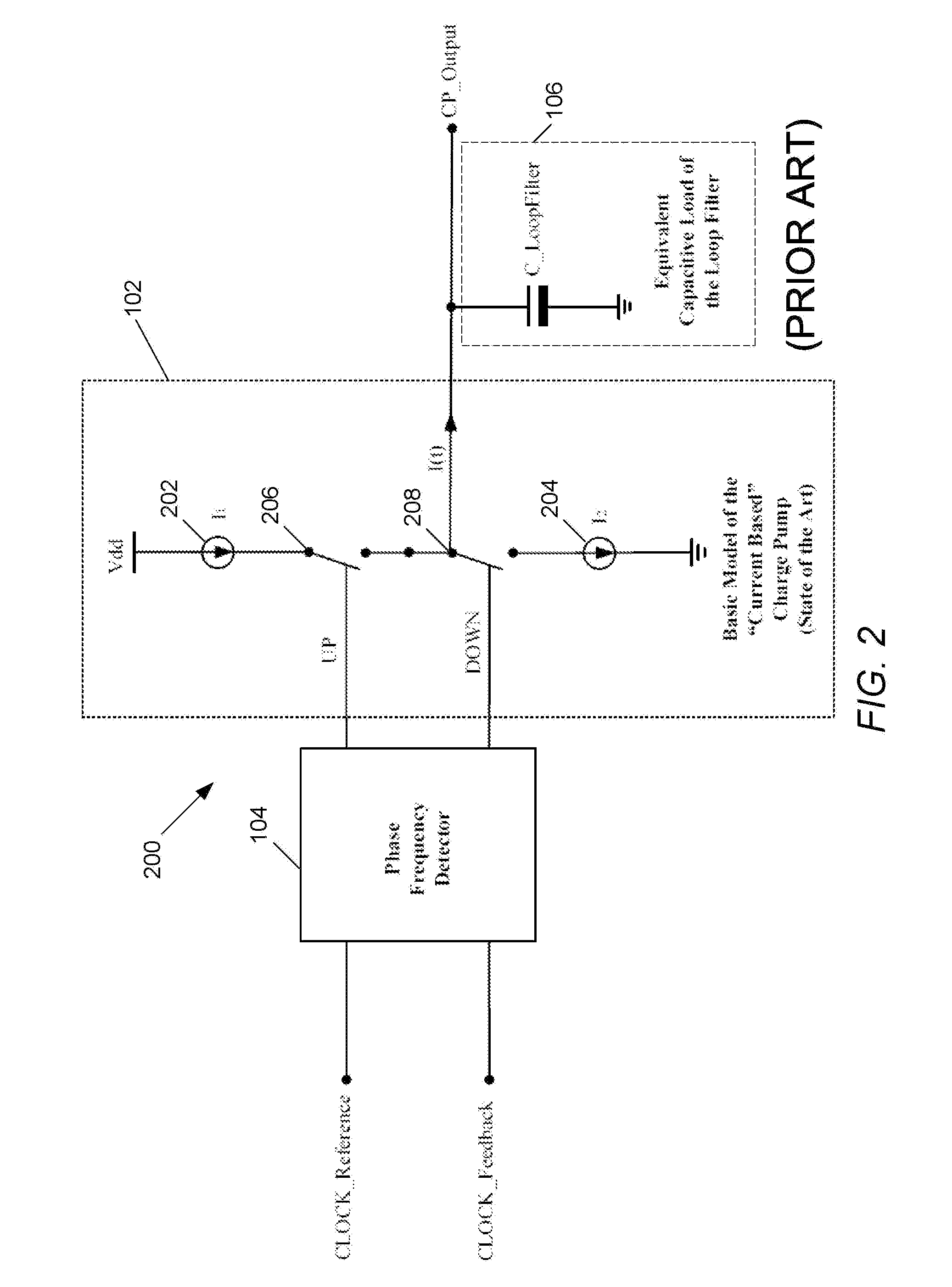Charge-based phase locked loop charge pump
a charge pump and phase lock technology, applied in the direction of automatic control, process and machine control, instruments, etc., can solve the problems of reference spurs, phase jitter induced on the vco, constant current consumption of the pump in the bias circuitry, etc., and achieve low power consumption and high speed
- Summary
- Abstract
- Description
- Claims
- Application Information
AI Technical Summary
Benefits of technology
Problems solved by technology
Method used
Image
Examples
Embodiment Construction
[0036]In the following detailed description, numerous specific details are set forth by way of examples in order to provide a thorough understanding of the relevant teachings. However, it should be apparent to those skilled in the art that the present teachings may be practiced without such details. In other instances, well known methods, procedures, components, and / or circuitry have been described at a relatively high-level, without detail, in order to avoid unnecessarily obscuring aspects of the present teachings.
[0037]Systems and methods of the present disclosure provide for and / or facilitate implementation or use of a novel design of a charge pump, based on charge redistribution (charge-based) through the use of a switched charge transfer device (e.g., capacitor), as opposed to current-based charge pumps of the prior art. An aspect of such charge-based technology generally includes a switchable charge transfer device (e.g., capacitor) and four or more switches. Such charge-based...
PUM
 Login to View More
Login to View More Abstract
Description
Claims
Application Information
 Login to View More
Login to View More - R&D
- Intellectual Property
- Life Sciences
- Materials
- Tech Scout
- Unparalleled Data Quality
- Higher Quality Content
- 60% Fewer Hallucinations
Browse by: Latest US Patents, China's latest patents, Technical Efficacy Thesaurus, Application Domain, Technology Topic, Popular Technical Reports.
© 2025 PatSnap. All rights reserved.Legal|Privacy policy|Modern Slavery Act Transparency Statement|Sitemap|About US| Contact US: help@patsnap.com



